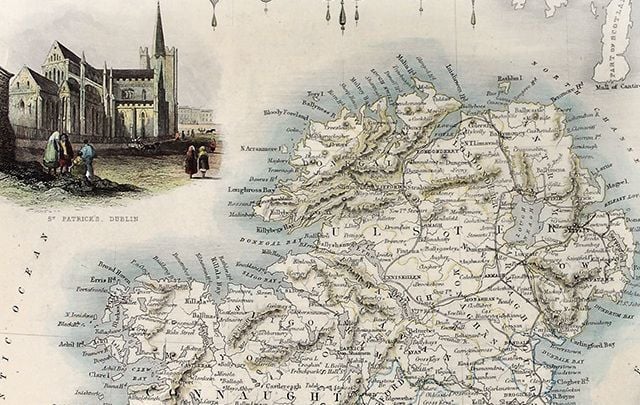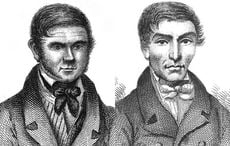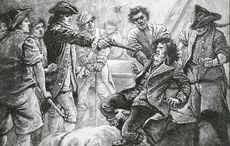Try these five resources to trace your Irish heritage!
1. Parish Registers (1670-1900)
It's almost impossible to overstate the importance of this record set. The 10.6 million records in this collection can provide a direct link back to your Irish ancestry, allowing you to find your original Irish family for the first time.
Because of a disastrous fire that destroyed millions of Irish records in 1922, the information stored in local parishes is oftentimes the only remaining evidence we have of our ancestors. These records cover 200 years of Irish history and all 32 counties.
Once you have located your Irish family, you'll be able to use this information to find out more details in our other records – the largest collection of Irish records available online.
What you will find: These records contain baptism, marriage, and burial records, which hold a tremendous amount of genealogical information. You'll find birth dates, places of residence, names of family members, maiden names, and much more. See the quickfire guide to parish registers for more details.
2. Griffith's Valuation (1847-1864)
Since many valuable records were destroyed in 1922, genealogists are lucky that the Irish kept extraordinarily good land records. Griffith's Valuation cataloged land value throughout Ireland, and contains 2.9 million records of all 32 counties of Ireland.
The most complete version of Griffith's Valuation is online only at Findmypast. Not only do we have essential maps available, but we have up to 500,000 names that cannot be found in other versions of the collection elsewhere online.
What you will find: You'll be able to see the name, year, and location of your ancestor's residence in the transcription. You'll also be able to see the description and value of the land, along with a reference for finding it on a map.
Key resource: An expert guide to Griffith's Valuation
3. Landed Estate Court Rentals (1850-1885)
One of our exclusive and essential record sets that is far too little-known is the Landed Estate Court Rentals. These records themselves are a result of the Great Famine – many landlords went bankrupt because their tenants weren't paying rent, and the government stepped in to bail them out.
So from 1848 onwards, we have the records of over half a million tenants located in the descriptions of these struggling estates.
What you will find: You will find details on the property your ancestors rented, including their name, place of residence, and facts about their tenancy or lease arrangement. You will also find maps that highlight exactly where they lived.

Love Irish history? Share your favorite stories with other history buffs in the IrishCentral History Facebook group.
4. Petty Sessions Court Registers (1828-1912)
Ireland in the 19th century was a surprisingly litigious society, so there's a good chance you'll be able to find your ancestors somewhere in our Petty Sessions – court cases involving lesser offenses. This isn't necessarily about finding your criminal ancestors (though they are in here too) – there are plenty of civil cases in these 33 million records as well.
What you will find: These records provide names of witnesses, victims, and alleged perpetrators. If you're able to find your ancestors in here, you'll probably get a good story out of it – you'll also find descriptions of the offenses and details on the verdict and sentence.
5. 1821-1851 Census Survivals
As we mentioned, many 19th-century census records were destroyed in 1922, but what many family historians don't know is that not all of them were destroyed. We have 600,000 census records from the early 19th century online at Findmypast. Records of whole counties can be found almost entirely intact for 1821, 1831, 1841, and 1851. We have also uncovered Census Search Forms with abstracts from 1841 & 1851 censuses, contained in 1909 pension applications.
What you will find: Information contained in these records varies depending on what survived, and what year the census was taken in. For certain counties, there is a wealth of information on the households recorded.
*This article was produced as part of a previous partnership with Findmypast in 2016. Updated in October 2024.




Comments